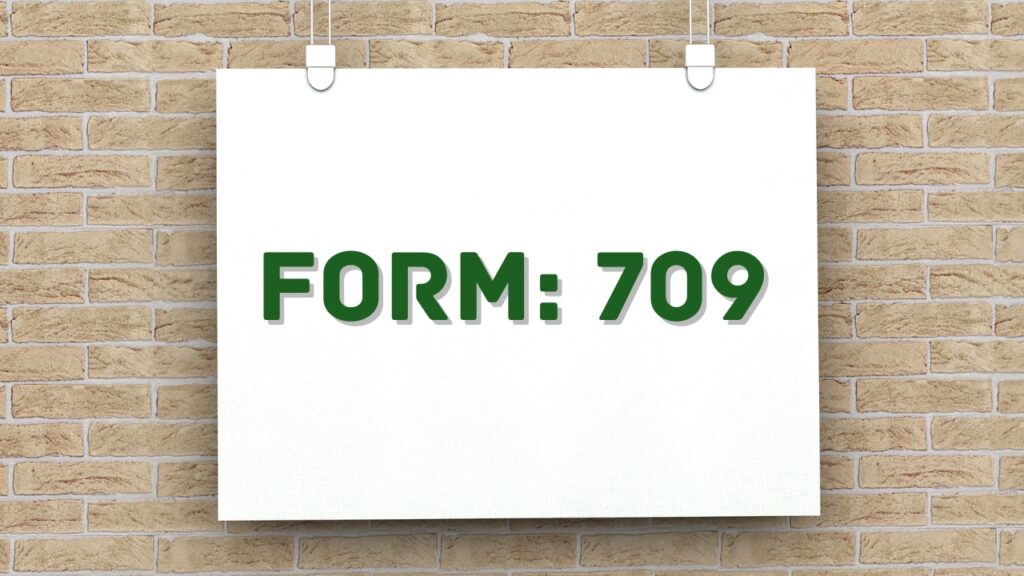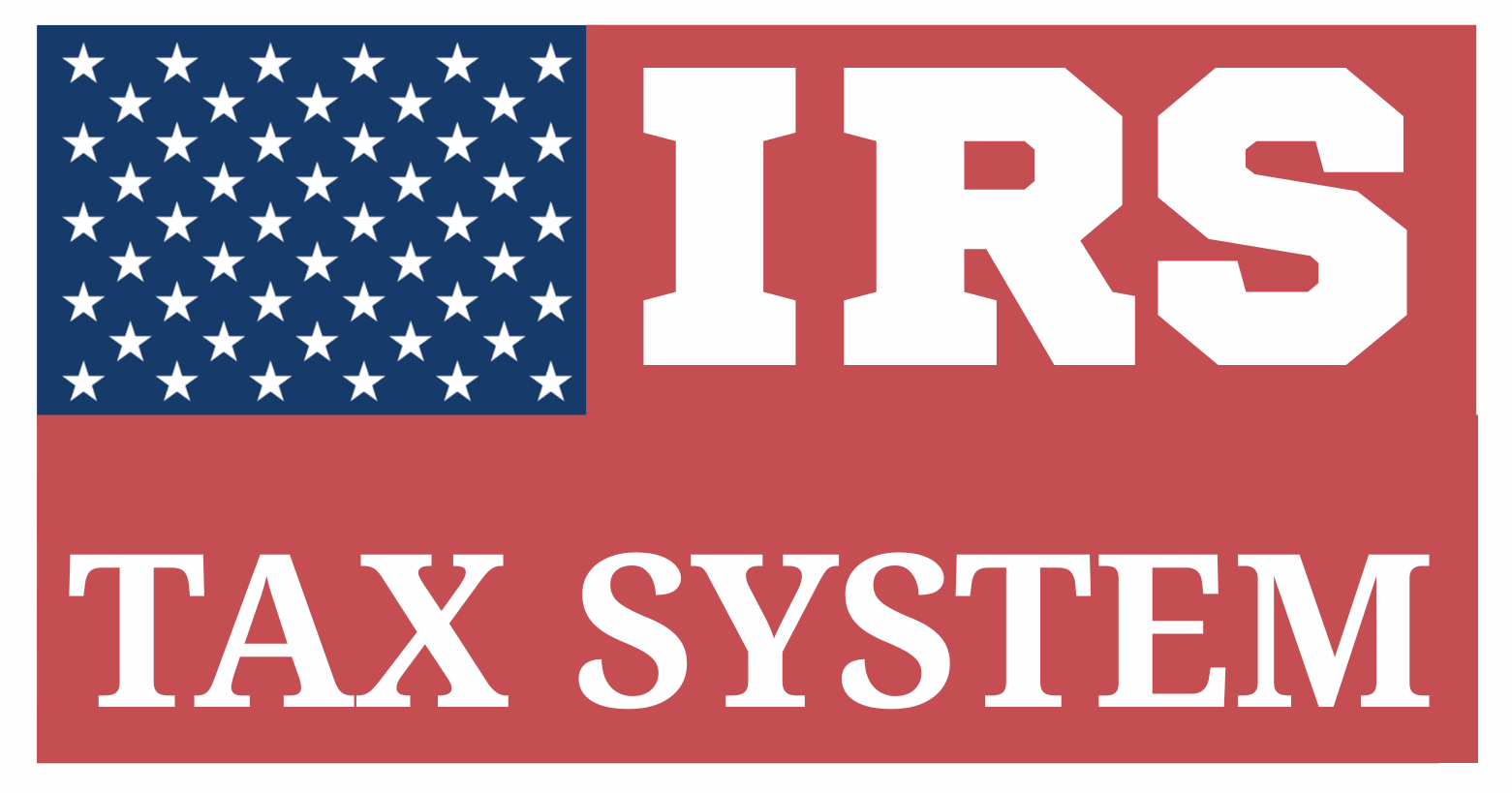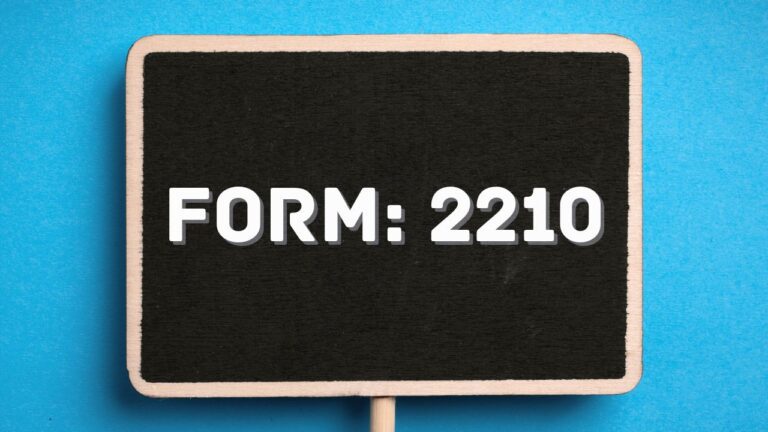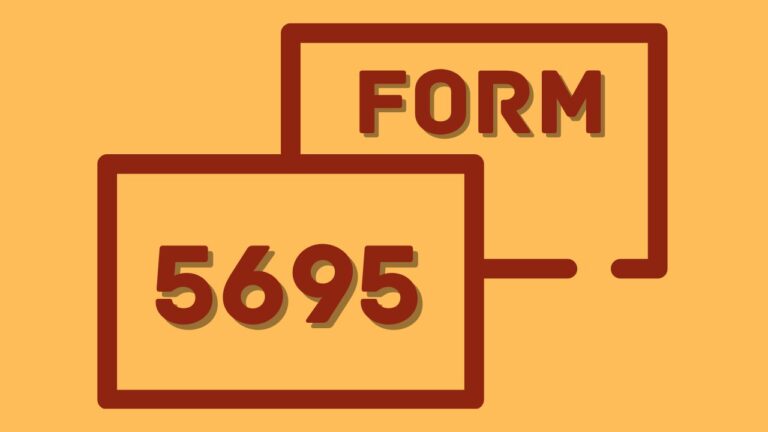Form 709: Briefing About Gifts and Generation
Table of Contents
A Comprehensive Outline On Form 709

IRS Form 709 is the official tax form used to report:
- Gifts of money or property exceeding the annual gift tax exclusion, and
- Generation-Skipping Transfers (GSTs) — which involve transferring assets to someone two or more generations below the donor (such as a grandchild), either directly or through a trust.
Form 709 helps the IRS:
- Record how much of your lifetime gift and estate tax exemption has been used,
- Apply any applicable gift tax, and
- Assess whether any Generation-Skipping Transfer Tax (GSTT) applies.
Form 709 is informational for most taxpayers, unless the donor has exceeded the lifetime exemption or made taxable GSTs.
Purpose of IRS Form 709
Form 709 ensures compliance with two key federal transfer taxes:
- Gift Tax: Applies when you give someone property or money without expecting equal value in return.
- GST Tax: Targets large wealth transfers that skip generations, potentially avoiding estate taxes.
This form:
- Tracks lifetime gifts that reduce your federal estate tax exemption,
- Prevents abuse of gift-splitting among spouses,
- Ensures the GST exemption is applied correctly for trusts and direct skips,
- Helps the IRS prevent underreporting of non-cash or improperly valued gifts.
Who Must File IRS Form 709?
IRS Form 709 – United States Gift (and Generation-Skipping Transfer) Tax Return must be filed by any individual U.S. citizen or resident who makes certain types of gifts or generation-skipping transfers (GSTs) during the tax year. This form is not filed jointly — each spouse must file their own Form 709 if required, even when splitting gifts.
You must file Form 709 if any of the following apply in a calendar year:
1. You Gave Gifts That Exceed the Annual Exclusion
- If you gave any one person more than the annual gift tax exclusion limit (e.g., $18,000 in 2025), you must report the excess on Form 709.
- Example: If you gave your niece $25,000 in 2025, the first $18,000 is excluded, and the excess $7,000 must be reported.
2. You Made Gifts of “Future Interest”
- Any gift where the recipient cannot immediately use, possess, or enjoy the property is considered a gift of future interest and is always reportable, even if under the annual exclusion.
- Common examples include:
- Gifts to a trust without Crummey withdrawal rights
- Transfers of property that vest years later
- Contributions to custodial accounts with delayed access
3. You and Your Spouse “Split” a Gift
- Married spouses have the option to split gifts, allowing them to treat a gift made by one spouse as though it were given jointly.
- If you and your spouse split a gift, both of you must file separate Form 709s, and both must sign the election on each form.
4. You Gave Property Below Fair Market Value
- If you sold property or loaned money at a discount, the difference between the fair market value and the actual transfer amount is treated as a gift.
- This includes:
- Transferring ownership of a $300,000 home to your child for just $1.
- Forgiving a debt or loan
- Making a below-market loan, where the IRS imputes interest
5. You Made Generation-Skipping Transfers (GSTs)
- If you made gifts or transfers to a person two or more generations below you (e.g., grandchildren or unrelated individuals over 37.5 years younger), as aall direct skips and transfers to trusts must be reported to the IRS.
- Generation-Skipping Transfers (GSTs) are taxed under a distinct set of rules, and Form 709 allows you to allocate your GST exemption to reduce or eliminate the tax due on these transfers.
6. You Gave Gifts That Are Not Exempt
Even gifts below the exclusion threshold must be reported if they do not qualify for an exclusion, such as:
- Gifts to a non-citizen spouse (limited to $185,000 in 2024, inflation adjusted annually),
- Gifts where the giftor retains some control or income rights (e.g., certain irrevocable trusts).
When You Do Not Need to File IRS Form 709
While IRS Form 709 is required in many gift scenarios, not all gifts are reportable. There are several important exceptions under U.S. tax law where gifts are exempt from gift tax reporting and no Form 709 is required. Understanding these situations can help taxpayers avoid unnecessary filings while staying compliant.
Below are the most common cases where Form 709 does not need to be filed:
1. You Gave Gifts Within the Annual Exclusion Limit
- In 2025, the annual gift tax exclusion is $18,000 per recipient.
- If you gave $18,000 or less to each individual and the gift qualifies as a present interest, it is excluded from reporting.
- llustration: Suppose you give $18,000 individually to each of your two children during the tax year.
Key Rule: As long as each gift is within the exclusion and does not involve “future interest,” you’re exempt from filing.
2. You Gave Unlimited Gifts to Your U.S. Citizen Spouse
- Transfers of property between spouses who are both U.S. citizens are fully exempt from federal gift tax, no matter the value of the gift.
- Example: You transfer $2 million to a joint bank account with your U.S. citizen spouse — this is not a taxable event.
Important: Gifts to non-citizen spouses have an annual limit ($185,000 in 2024, adjusted for inflation), so Form 709 may be required in those cases.
3. You Paid Someone’s Medical Bills or Tuition Directly
- Gifts used to pay for another person’s:
- Medical expenses (doctor, surgery, hospital bills, insurance premiums),
- Tuition (not books, lodging, or supplies),
are excluded from gift tax, if paid directly to the institution or provider.
Example: Paying $50,000 directly to a university for your grandchild’s tuition does not require Form 709.
Caution: If you give the money to the individual (not the institution) to pay these costs, it does count as a gift and may trigger a Form 709 requirement.
4. You Made Charitable Contributions
- Gifts or donations to IRS-qualified charitable organizations are generally excluded from gift tax rules.
- This includes donations of cash, stocks, vehicles, or real estate to:
- 501(c)(3) nonprofits,
- Religious institutions,
- Educational and medical foundations.
No Form 709 is needed for qualifying charitable donations.
5. You Gave Gifts to Political Organizations
- Contributions to political organizations, including campaign committees and PACs, are exempt from federal gift tax and do not need to be reported on Form 709.
This exemption supports the constitutional right to participate in the political process without tax implications.
6. You Made Only Present Interest Gifts Within Limits
- Present interest gifts allow the recipient to immediately enjoy or use the gift (e.g., cash, stocks, vehicles).
- If all your gifts are of present interest and fall within the $18,000 per person limit, no filing is required.
Future interest gifts, even if under the limit, must be reported — so always verify the nature of the gift.
Form 709 Instructions: Complete Section-by-Section Analysis
The form has multiple parts and schedules, each designed to capture a specific aspect of gift and transfer reporting.
Cover Page: Basic Taxpayer Information
This is the top section of Form 709 and sets up the return:
- Filer’s Name, SSN, Address
- Calendar Year of Gift Reporting
- Checkboxes:
- Amended return
- Gift-splitting election
- First-year GST allocation
- Final return
- Filer’s citizenship and marital status
Purpose: Identifies the taxpayer and the type of return being filed, and flags whether any special elections apply.
Part 1 – General Information
This part includes critical background details and declarations necessary for IRS review.
Key Fields:
- Question A: Are you splitting gifts with your spouse?
- Question B: Is your spouse also filing a gift return?
- Question C: Are any gifts indirect or transfers with retained interest?
- Question D–F: Details regarding trust involvement or prior returns.
- Question G: Allocating GST exemption?
- Question H: Names and SSNs of donees (gift recipients).
Purpose: Establishes the context of the gifts and alerts the IRS to complex transfer structures or special elections.
Part 2 – Tax Computation
This section computes the total gift tax due after adjusting for exclusions, credits, and exemptions.
Key Lines:
- Total value of current year taxable gifts
- Total of prior year taxable gifts
- Aggregate taxable gifts (lifetime total)
- Tax on aggregate gifts (via unified gift tax table)
- Tax on prior gifts (from earlier Forms 709)
- Net gift tax on current year
- Gift tax due after applying unified credit
Purpose: Performs the core gift tax calculation and applies the unified lifetime exclusion to determine any tax due.
Part 3 – Tax Computation for Split Gifts (If Applicable)
If both spouses choose to split gifts, this section reports how the total gift amount is divided between them:
- Lists total value of split gifts.
- Applies the spouse’s half to the return.
- Calculates tax based on split values.
Spousal Signature Required
If spouses elect to split gifts, the non-donor spouse must either sign the joint Form 709 or submit their own separate Form 709.
Purpose: Ensures accurate and authorized application of the gift-splitting election under IRC §2513.
Schedule A – Computation of Taxable Gifts
This schedule is the most detailed and is divided into three parts, depending on the type of transfer:
Part 1 – Reportable Gifts That Are Subject Solely to Federal Gift Tax
Used to report:
- Direct gifts to individuals
- Transfers of property (cash, stocks, real estate, etc.)
- Outright gifts not involving skip persons or trusts
Key fields:
- Description of gift
- Donee’s name and SSN
- Date of gift
- Fair market value (FMV)
- Annual exclusion used
Part 2 – Direct Skips (GST + Gift Tax)
Used for:
- Direct gifts to skip persons (e.g., grandchildren)
- Subject to both gift tax and GST
Includes:
- FMV of gift
- Allocation of GST exemption
- Calculation of taxable amount after exclusion
Part 3 – Indirect Skips / Trust Transfers
Used for:
- Transfers to trusts with skip-person beneficiaries
- Complex estate-planning gifts
Includes:
- Trust name & EIN
- Type of trust
- Value transferred
- Exemption allocations
Purpose of Schedule A: To provide a line-by-line account of each gift made, categorized based on gift type and tax exposure.
Schedule B – Gifts From Prior Periods
This schedule recaps gifts reported in prior Form 709 filings, essential to track usage of the lifetime gift exemption.
Fields include:
- Year of gift
- Total taxable gift amount per year
- Cumulative total
Purpose: Links current return with historical gifting data to avoid double-counting exclusions or credits.
Schedule C – Deceased Spousal Unused Exclusion (DSUE)
If your spouse passed away and you received DSUE (portability election) from their estate, use this schedule to claim it.
Fields:
- Deceased spouse’s name and SSN
- Year of death
- DSUE amount available
- DSUE amount applied to current gifts
Purpose. Enables a surviving spouse to use the unused estate and gift tax exemption of a deceased spouse to lower their own gift tax obligations.
Schedule D – GST Exemption Reconciliation
This schedule is used for reconciling generation-skipping transfer exemptions allocated manually or automatically.
It reports:
- Total transfers subject to GST
- Exemption allocations
- Trusts receiving exemption
- Remaining GST exemption
Purpose: Ensures accurate tracking of GST exemption and prevents overuse or under-allocation in trust-based or skip-person gifting strategies.
Signature Section
Includes:
- Taxpayer’s signature and date
- Spouse’s consent for split gifts (if applicable)
- Paid preparer’s information and signature
Purpose: Confirms the return is complete and accurate under penalties of perjury and establishes legal authorization for gift-splitting elections.
Quick Reference: IRS Form 709 Structure Summary Table
| Section | Function |
| Cover Page | Identifies taxpayer, tax year, and return type |
| Part 1 – General Info | Provides background on gift activity, elections, relationships |
| Part 2 – Tax Computation | Calculates gift tax owed after lifetime credit |
| Part 3 – Split Gift Reporting | Reports and computes gift splitting between spouses |
| Schedule A – Gift Breakdown | provides a detailed listing of all reportable gifts, including direct transfers, gifts to skip persons, and transfers made through trusts. |
| Schedule B – Prior Gifts | Summarizes taxable gifts from previous years |
| Schedule C – DSUE | Applies unused exclusion from deceased spouse’s estate |
| Schedule D – GST Reconciliation | Tracks GST exemption allocations for skip persons and trusts |
| Signature Block | Verifies taxpayer and spouse approval, and preparer involvement (if any) |
Example: Filing Form 709 for a Gift Exceeding the Annual Exclusion
Scenario:
In 2025, Emma gifts her niece $25,000 in cash. The annual gift tax exclusion per recipient in 2025 is $18,000. Emma has never used any of her lifetime gift tax exemption before.
Form 709 Reporting Details:
- Total Gift: $25,000
- Annual Exclusion: $18,000
- Taxable Gift: $25,000 – $18,000 = $7,000
Emma must file Form 709 to report the $7,000 taxable gift.
- She will not owe any gift tax, because this amount is covered under her lifetime exemption (which exceeds $13 million in 2025).
- The $7,000 will be subtracted from her lifetime exemption, reducing her future tax-free gift capacity.
Key Form 709 Entries:
| Field | Entry |
| Schedule A, Part 1 | Gift to niece – $25,000 |
| Annual exclusion applied | $18,000 |
| Taxable gift reported | $7,000 |
| Lifetime exemption used | $7,000 |
| Gift tax due | $0 |
Summary:
Emma is not paying any tax, but the IRS now has a record that $7,000 of her lifetime exemption has been used. She is required to file Form 709, even though no tax is owed.
Filing Deadline for Form 709 – United States Gift (and Generation-Skipping Transfer) Tax Return
Standard Due Date
Form 709 must be filed by April 15 of the year after the gift was given, which corresponds with the standard deadline for personal income tax filings.
Example
Form 709 for gifts made in the 2024 tax year is due on or before April 15, 2025..
Filing with an Extension
If you need more time to file Form 709, you can request an automatic 6-month extension by filing IRS Form 8892 (Application for Automatic Extension of Time To File Form 709).
- Important: Filing Form 4868 (extension for your personal income tax return) also extends the time to file Form 709—but not the time to pay any gift tax due.
Tip: Even with an extension, any gift tax liability must still be paid by April 15 to avoid interest and penalties.
Penalties for Late Filing
Failing to file Form 709 on time can result in:
- The penalty for failing to file is 5% of the unpaid tax per month, capping at a total of 25% of the tax due..
- Late payment penalties (0.5% per month, if tax is owed)
- nterest on any unpaid liability begins accruing from the original due date of Form 709 and continues until payment is made in full.
If no tax is due (i.e., gifts are covered by exclusions/exemptions), penalties are generally not applied, but the form must still be filed to document the use of your lifetime gift exclusion.
Quick Summary
| Event | Deadline |
| Gifts made during 2024 | April 15, 2025 |
| Extended filing deadline (via Form 4868 or 8892) | October 15, 2025 |
| If Gift tax payment is applicable | April 15, 2025 (without extension) |
Examples of When to File Form 709
Example 1: Large Cash Gift
In 2025, Merry gives her nephew $25,000.
- The annual exclusion is $18,000.
- She must file Form 709 to report the $7,000 excess.
- No tax is owed, but the excess will reduce her lifetime exemption.
Example 2: Gift to a Trust
Mark made a $50,000 gift by funding an irrevocable trust for the benefit of his granddaughter.
- This is a gift of future interest.
- He must file Form 709 and possibly use part of his GST exemption.
Example 3: Gift-Splitting
Sunny and Dan give $60,000 to their son jointly.
- They elect gift-splitting, so each reports $30,000.
- After applying the $18,000 annual gift tax exclusion, each spouse must report the remaining $12,000 of the gift on their individual Form 709.
Frequently Asked Questions (FAQs)
Do I owe tax when I file Form 709?
Usually no. Most people apply the amount against their lifetime exemption, which shields over $13 million as of 2025 (inflation adjusted).
Do both spouses file if we split gifts?
Yes. Even with gift-splitting, each spouse must file a separate Form 709 and check the gift-splitting election.
Is a car gifted to a child reportable?
If the fair market value exceeds $18,000 in 2025, it must be reported on Form 709.
Do I file Form 709 for college tuition I paid for my niece?
No, if paid directly to the institution, it’s excluded under the education exclusion.
Can Form 709 be amended?
Yes. You can file an amended Form 709 by clearly marking it as “Amended” and referencing the original submission.







